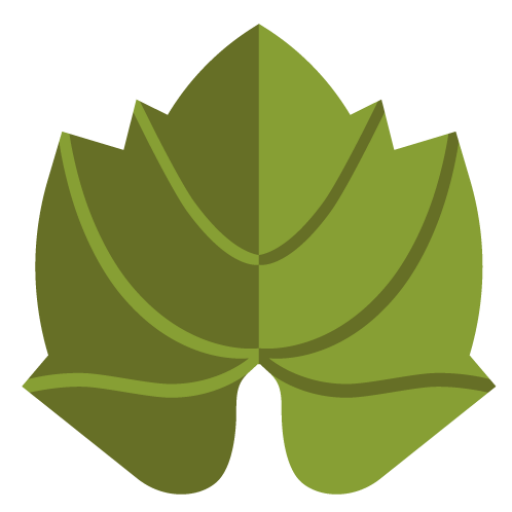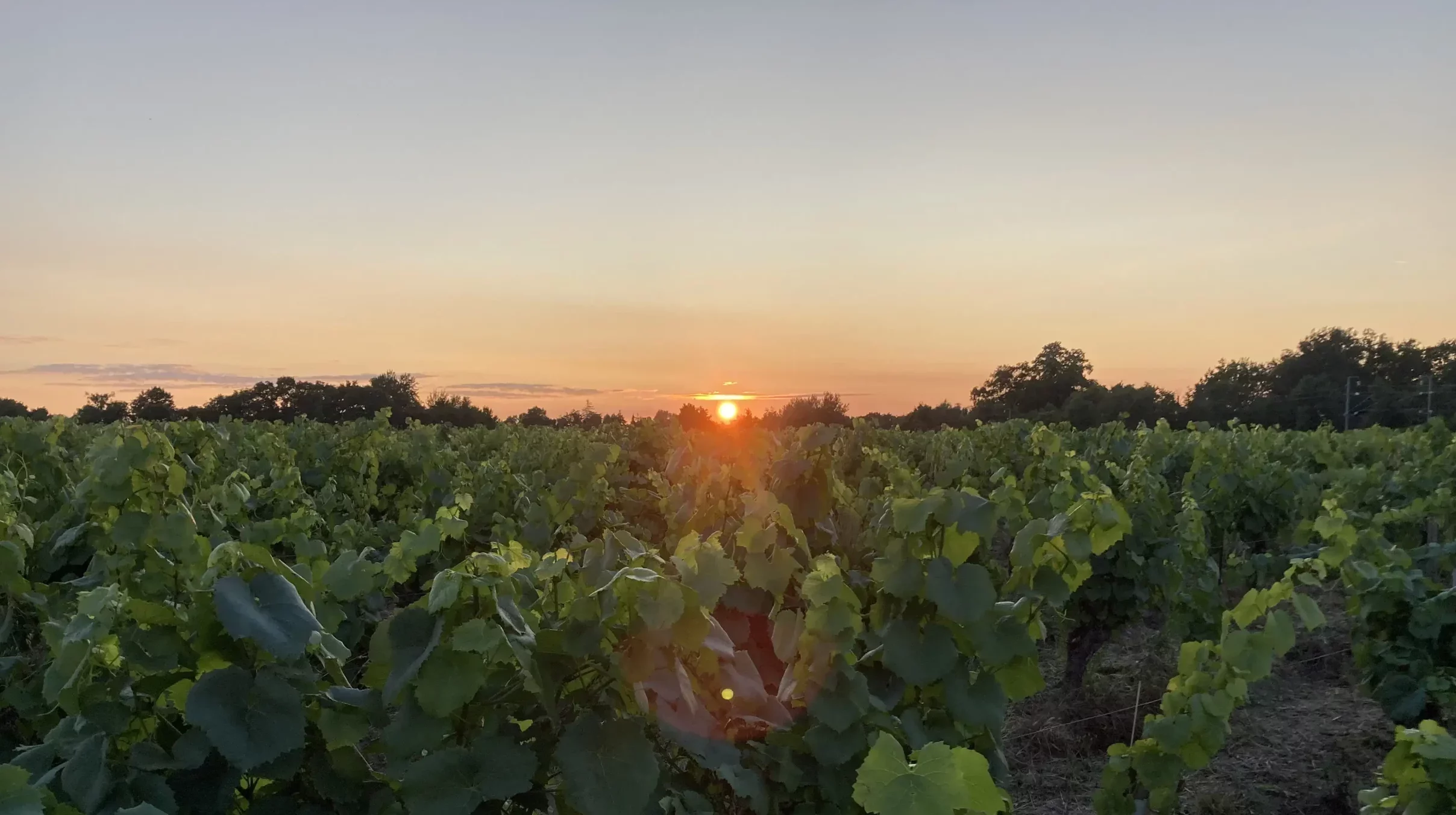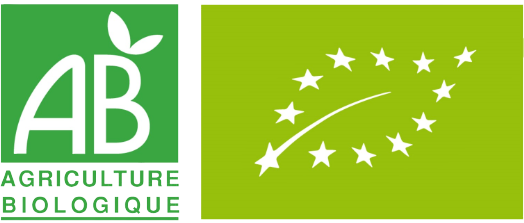In the vineyard, we strive to bring out the best in our terroir, which is both Loire and Nantes. This quest is achieved through advanced agro-ecological practices aimed at balance and diversity.
The notion of terroir is the essence of our thinking and the basis of our actions. We approach our terroir in its geographical dimension, obviously, due to its immediate proximity to the Loire, but also to the Atlantic Ocean.
Our terroir is also a place where we live and work every day. It’s made up of the men and women who nurture it, on a living soil that gives us the best, in a rich and diverse environment.
Our terroir is the combination of our winemaking know-how, production techniques, soil, topography, climate, biodiversity and landscape.
Geography
Just outside Nantes, Domaine Les Trois Toits is ideally located in the commune of Vertou, renowned for its wine-growing tradition. This geographical position in the heart of the city connects us to the local people and life. Part of the estate is being developed in a context of urban agriculture, which allows us to take on major environmental challenges.
Climate
Situated in the west of France, in the Pays de la Loire region, the town of Vertou enjoys a temperate oceanic climate. This type of climate is characterised by moderate temperatures, fairly regular rainfall throughout the year and the absence of extreme seasons.
However, climate change has made itself felt in recent years, with long periods of drought, abnormally high temperatures in summer and a drying easterly wind regime. We are incorporating these changes into our agricultural thinking and practices in order to adapt rather than fight.
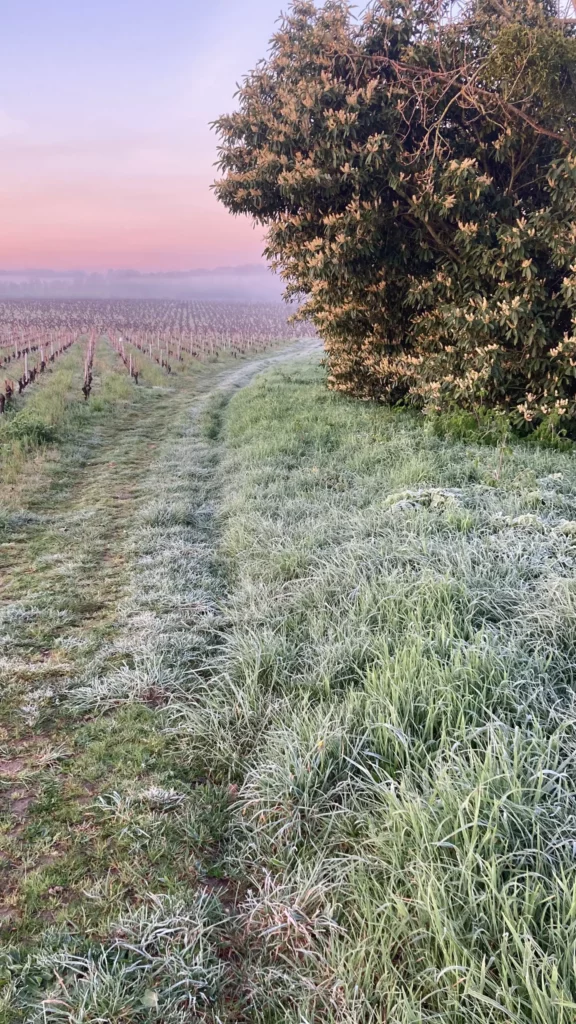
Soil
Our soils are rich and varied in texture and orientation. The bedrock is made up of more or less weathered micaschist: the foundations of the Armorican massif are emerging, giving us diversity and minerality. On the surface, the aeolian silts are rich in quartz. These soils are easy to work and allow the vines to grow deep into the soil, allowing the roots to capture the minerals in the subsoil.

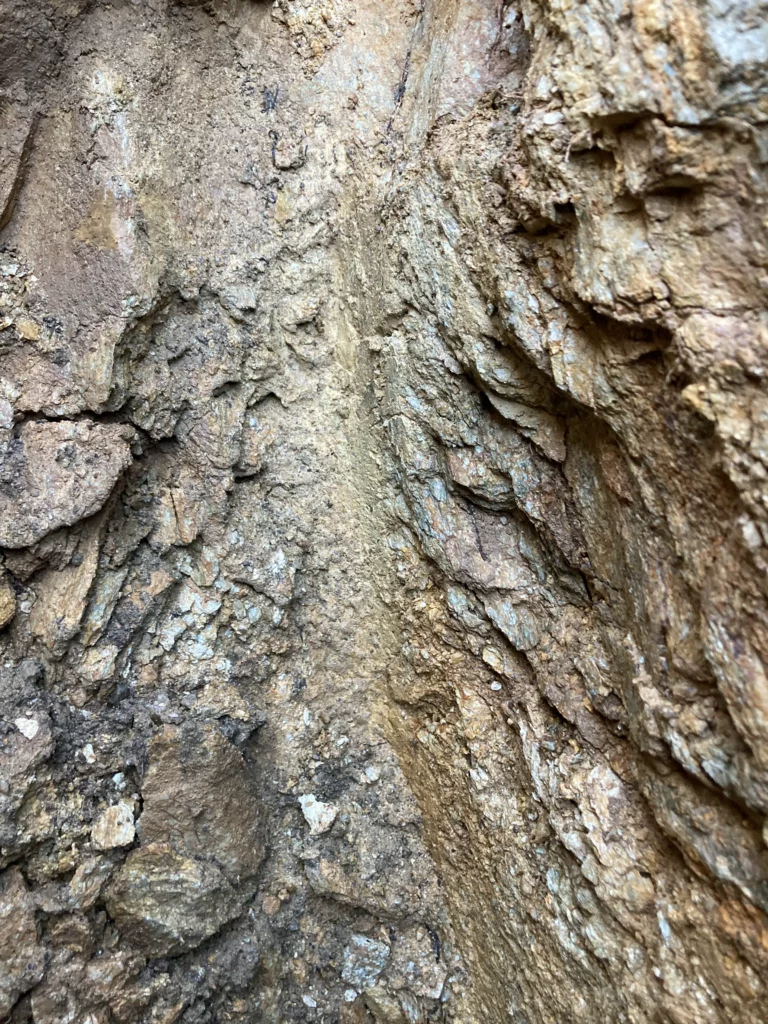

Plants
Close to the river Sèvre, the estate benefits from a varied environment. Forest and woodland adjoin our plots. Cattle meadows allow us to benefit from the presence of animals and the influence of the peerage. There are many hedgerows planted with lime trees, elms, cherry trees, hawthorns and other wild plum trees, providing great diversity.
Grape varieties
Melon B., also known as Melon de Bourgogne, is the dominant grape variety in our vineyard. It is the grape variety of the Muscadet Sèvre et Maine appellation, part of the Vins de Loire family. Alongside it, we grow Folle Blanche, which produces the famous Gros Plant du Pays Nantais, as well as macerated and sparkling wines using the traditional method.
These two grape varieties are endemic to the region and form part of the Nantes heritage, of which we are proud.
In order to diversify our offer and highlight the assets of our terroir, we have planted Gamay, Côt (Malbec) and Merlot. These grape varieties produce red grapes on a south-facing slope and produce magnificent red wines, matured with precision and ambition.
Finally, to adapt to the current climate and invest for the future, we are replanting resistant varieties such as Vidal, Sélénor, Villard Blanc, Villard Noir and Chambourcin.
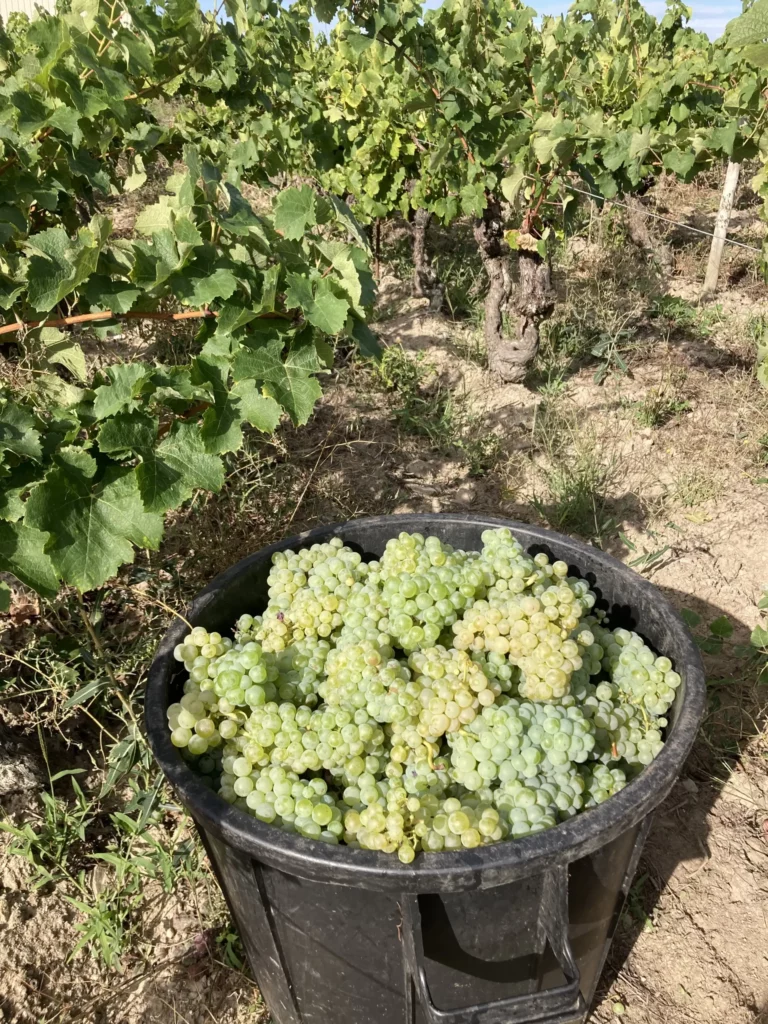
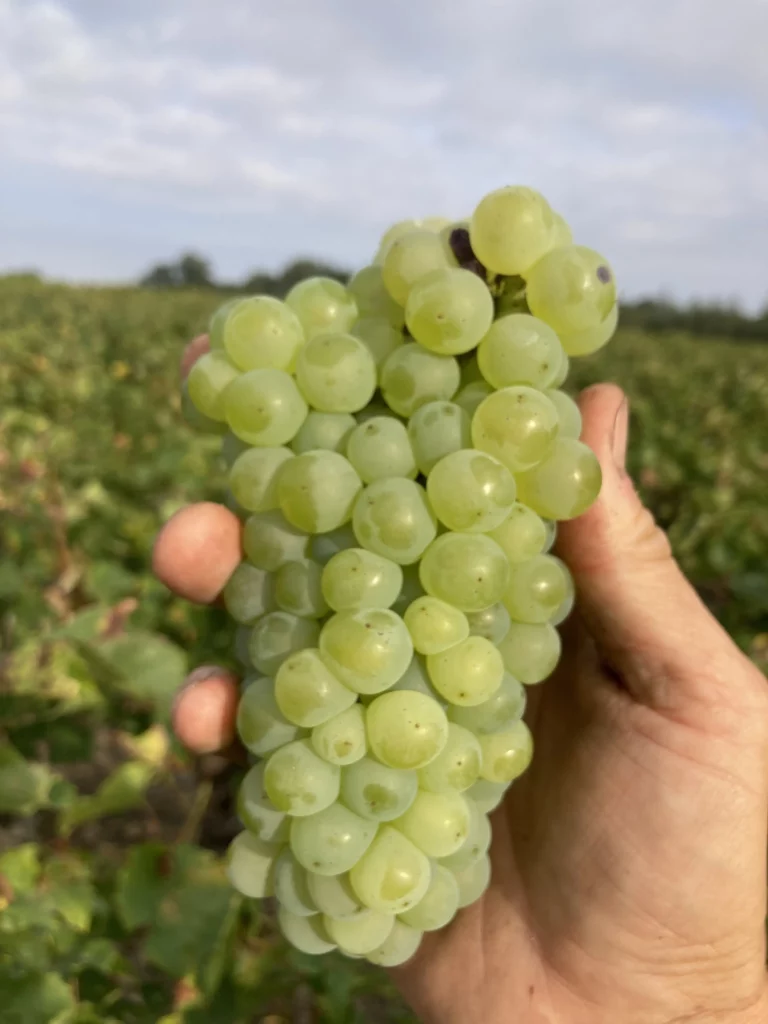
Follow us
on Instagram !
Every time we meet you, we share some news about the estate and its development. On a weekly basis, we communicate on social networks, aiming to deliver content that allows readers to understand a little more about the story behind each bottle of wine.
🇫🇷 La vigne, c`est aussi une histoire de machines 🚜.
Nos bons vieux tracteurs nous donnent parfois du fil à retordre. On les aime, ils nous rendent bien des services.
La vie est belle quand on a 50 ans !
🇺🇸 Winegrowing is also about machinery.
Our trusty old tractors sometimes give us a hard time. We love them, they serve us well.
Life is good when you`re 50!
#lestroistois #vertou #winemaker #vigneronindependant #domaineviticole #agriculturebiologique #tracteur #vinsnaturels

🇫🇷 Le Muscadet se déguste, se partage et se célèbre 🍷
Nous serons présents au Salon du Muscadet chez @marietta_nantes !
On vous invite vendredi 10 octobre à célébrer la richesse de notre terroir et (re)découvrir toute la diversité du Muscadet dans une ambiance chaleureuse.
Au programme :
🍷 10 crus communaux du Muscadet à découvrir et déguster
🕚 Dégustation de 11h à 19h pour explorer toutes les facettes du Muscadet
🤝 Après 19h, poursuivez l’échange et le partage avec les vignerons présents
📍 Marietta – Nantes
11 rue de la Tour d`Auvergne, Nantes
Réservez vite votre place et rejoignez-nous pour cette journée d’exception !
Vous y serez, nous y serons.
🇺🇸 Muscadet is meant to be tasted, shared, and celebrated 🍷
We will be at the Muscadet Show at Marietta!
We invite you on Friday, October 10, to celebrate the richness of our terroir and (re)discover the diversity of Muscadet in a warm atmosphere.
On the program:
🍷 10 Muscadet communal wines to discover and taste
🕚 Tasting from 11 a.m. to 7 p.m. to explore all the facets of Muscadet
🤝 After 7 p.m., continue the exchange and sharing with the winemakers present
📍 Marietta – Nantes
11 rue de la Tour d`Auvergne, Nantes
Reserve your place quickly and join us for this exceptional day!
You`ll be there, we`ll be there.
#lestroistoits #vertou #vignoblenantais #winelover #winemaker #muscadet #VinsdeNantes #salonduvin #SalonDuMuscadet #Muscadet #CrusCommunaux #Vignerons #Nantes

🇫🇷 Clap de fin pour les vendanges 2025 🍇.
Toutes nos grappes ont rejoint les cuves après une récolte riche en contrastes : ensoleillée , humide , exigeante mais splendide.�
Un vrai marathon pour nos équipes, rempli d’intensité, d’effort et de magie.
Mais ne vous y trompez pas : ce n’est que le début !�
La fermentation et la macération battent leur plein, chaque cuve demandant toute notre attention.
Alors que les jours raccourcissent et que l’air se rafraîchit, le vigneron se plonge désormais dans l’univers du chai… là où naissent les premiers jus et les futurs assemblages.
🇺🇸 Clap for the end of the 2025 harvest.
All our grapes have been transferred to the vats after a harvest rich in contrasts: sunny, wet, demanding but splendid.�
A real marathon for our teams, filled with intensity, effort, and magic.
But make no mistake: this is only the beginning!
Fermentation and maceration are in full swing, with each vat demanding our full attention.
As the days grow shorter and the air grows cooler, the winemaker now immerses himself in the world of the cellar... where the first juices and future blends are born.
#lestroistois #vertou #winemaker #vigneronindependant #domaineviticole #agriculturebiologique #vignoblenantes #millesime2025 #vendanges #vendanges2025 #harvesttime @les_extra_terrestres

🇫🇷 Ils se sont fait attendre… et les voilà enfin ! 🍇
Nos grappes de raisins rouges se lancent cette année dans un véritable concours de muscles : généreuses, denses et pleines de promesses.
Plantés sur notre parcelle en agroforesterie, ces jeunes ceps révèlent déjà toute la richesse du travail agronomique mené au Domaine Les Trois Toits.
Le résultat ? Des raisins d’une qualité exceptionnelle, annonciateurs de cuvées qui feront honneur à vos plus beaux dîners.
Un vrai chef-d’œuvre de la vigne, que nous avons hâte de partager avec vous !
🇺🇸 They took their time arriving... but here they are at last! 🍇
This year, our red grape clusters are entering into a veritable contest of strength: generous, dense, and full of promise.
Planted on our agroforestry plot, these young vines already reveal the richness of the agronomic work carried out at Domaine Les Trois Toits.
The result? Grapes of exceptional quality, heralding vintages that will do honor to your finest dinners.
A true masterpiece of the vineyard, which we can`t wait to share with you!
#lestroistois #vertou #winemaker #vigneronindependant #domaineviticole #agriculturebiologique #vignoblenantes #millesime2025 #vendanges #vendanges2025 #harvesttime @les_extra_terrestres

🇫🇷 Les vendanges 2025 battent leur plein au Domaine Les Trois Toits ! 🍇
Notre cépage fétiche, le melon de Bourgogne, est désormais entièrement récolté, pressé et déjà en pleine fermentation. Ce millésime 2025 s’annonce d’une grande richesse et promet des cuvées d’exception.
Amateurs de nos cuvées Muscadet, Phileas, La Plage ou Rooftop, préparez vos papilles… Quelque chose de beau se prépare dans nos chais !
Un grand bravo à notre équipe de vendangeurs, qui se plient en quatre (et surtout en deux 😉 ) pour ramasser chaque grappe à la main - une garantie de qualité que vous retrouverez bientôt dans vos verres.
Et ce n’est pas fini : nos raisins rouges arrivent à maturité et ne vont pas tarder à rejoindre la fête.
Restez connectés pour la suite de l’aventure !
🇺🇸 The 2025 harvest is in full swing at Domaine Les Trois Toits! 🍇
Our favorite grape variety, Melon de Bourgogne, has now been fully harvested, pressed, and is already in full fermentation. The 2025 vintage promises to be rich and exceptional.
Fans of our Muscadet, Phileas, La Plage, and Rooftop wines, get your taste buds ready... Something wonderful is coming out of our cellars!
A big congratulations to our team of harvesters, who bend over backwards (and especially double over 😉 ) to pick each bunch by hand—a guarantee of quality that you will soon find in your glasses.
And that`s not all: our red grapes are ripening and will soon be joining the party.
Stay tuned for the rest of the adventure!
#lestroistois #vertou #winemaker #vigneronindependant #domaineviticole #agriculturebiologique #vignoblenantes #millesime2025 #vendanges #vendanges2025 #harvesttime @les_extra_terrestres

Subscribe to our newsletter !
In addition, we create a newsletter, which we publish 5 times a year, to share our news with those of you who prefer to sit back and read.
Enjoy your reading, stay tuned and keep in touch.
